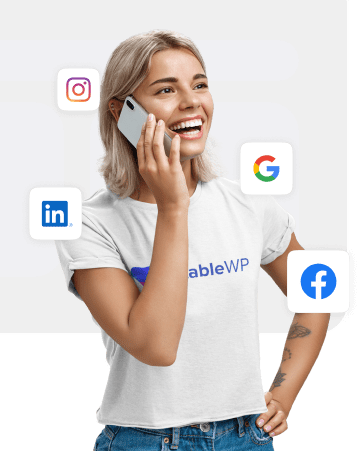Online lead generation is essential to keep your business alive and help it thrive.
Growing your business is only possible if you have a steady stream of one key thing – fresh quality leads.
And the best place to find and attract leads at scale is on the internet.
Of course, getting new leads is much easier said than done, and not just any lead will do.
However, with the right digital marketing strategy, you can create an online lead generation machine.
No matter if you’re running a brick-and-mortar, purely online or a hybrid business, or if you’re in the B2B or B2C industry, our lead generation strategy can fill up your sales pipeline with a consistent supply of high quality, targeted leads.
Read on…
Table of Contents
What is lead generation in digital marketing
Lead generation is the process of attracting prospects and collecting lead information from people who may be interested in your products or services.
In the world of digital marketing, lead generation involves many elements, from an engaging, SEO-friendly presence that helps drive people to your website to the website itself, which has to be relevant, well-designed and offer value to capture visitors’ lead information.
Online lead generation consists of five main action steps:
- 1. Attract targeted traffic to your website or landing page
- 2. Convert visitors into leads with high value-offers
- 3. Nurture those leads with marketing communication
- 4. Produce sales-ready leads primed to do business with you
- 5. Close sales and turn leads into paying customers
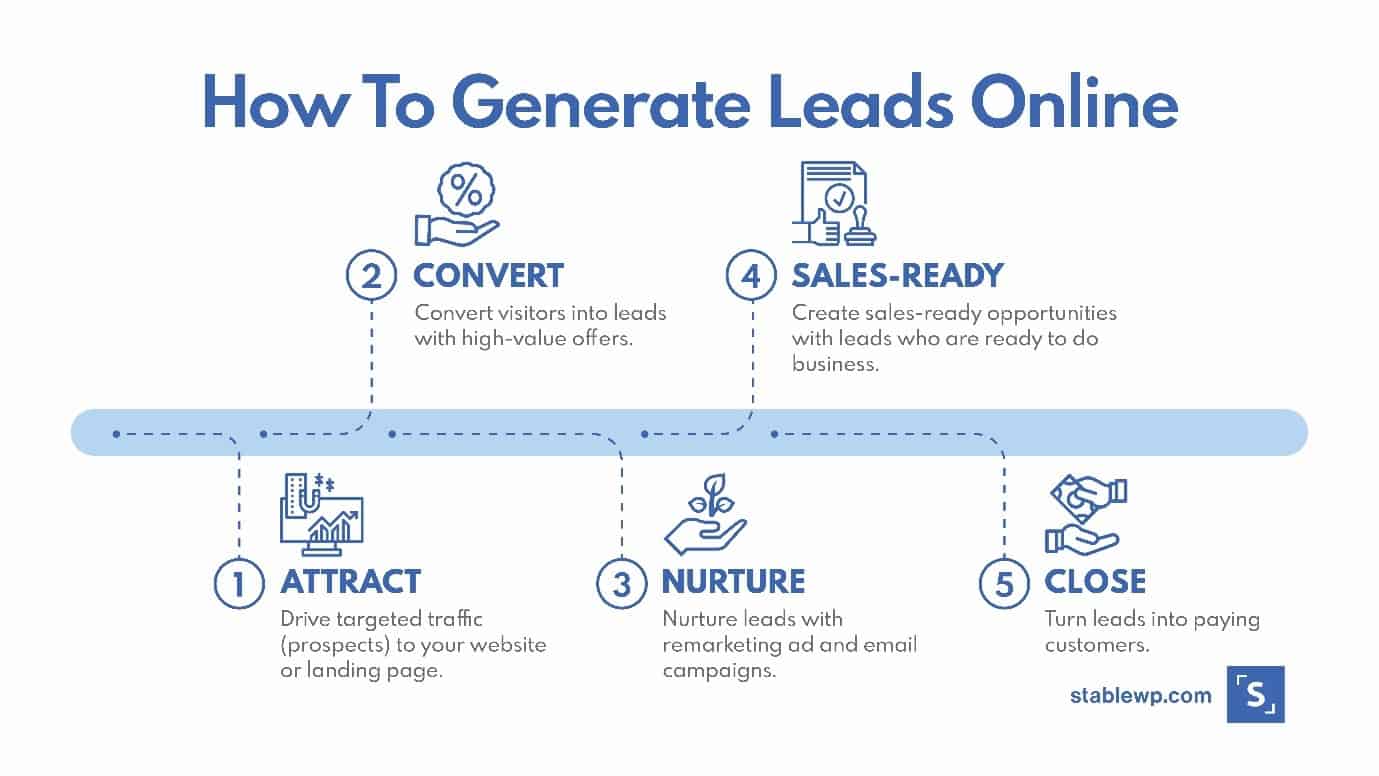
First you need to drive traffic to your site or landing page. You can do this effectively with digital marketing channels like SEO (organic traffic), PPC (Google and Facebook Ads), social media, referrals, etc.
In the next step, the flow of content and information works together with the design of your website to capture people and convince them to input their info (often an email address) so they effectively become a lead for your business.
Once a lead is captured, it’s up to you to nurture and warm up that lead for a potential demo or a sales call. Remarketing tactics like email campaigns and retargeting ads can help prime those leads until they become sales-ready.
Finally, your sales rep or team takes over to close a deal and turn that lead into a paying customer for your business.
However, it is also the most crucial activity a business can invest in and it should be at the forefront of your digital marketing strategy.
Why you need to generate leads for your business
The reason why your business needs to generate leads online is to consistently attract leads to create new opportunities to close sales and generate revenue. Your business needs leads to survive as continuous customer acquisition is an absolute necessity, even if you already have a strong base of repeat customers.
Most people won’t be ready to buy your product or service the first time they interact with your business online. That’s why you need to capture their lead information first, and through multiple touchpoints warm them up until they become ready to buy.
Depending on your sales cycle, lead nurturing can take anything from a few days to weeks or even months.
That’s why, to keep your business running and growing, you need a steady stream of quality leads – those you can turn into profitable customers. And online marketing can provide a consistent stream of prospects and leads to fill your sales pipeline.
This may seem extremely complex and difficult; however, digital marketing offers unprecedented ways of automating the entire lead generation process, from attracting prospects to converting leads and even closing sales.
With the right digital marketing strategy and guidance from an experienced digital marketing agency, your business can generate leads on autopilot.
Before we jump into the actual lead generation strategy, let’s quickly touch on the types of leads you need to consider when generating leads online.
Types of leads online
In digital marketing, a lead is a person that expresses interest in a company’s product or service and has provided contact information. However, not all leads are equal.
As a business, it’s your job to identify and categorize the leads you receive so that you can properly interact with them and, hopefully, convert them into customers.
In general, leads can be split into one of two categories: MQL or SQL.
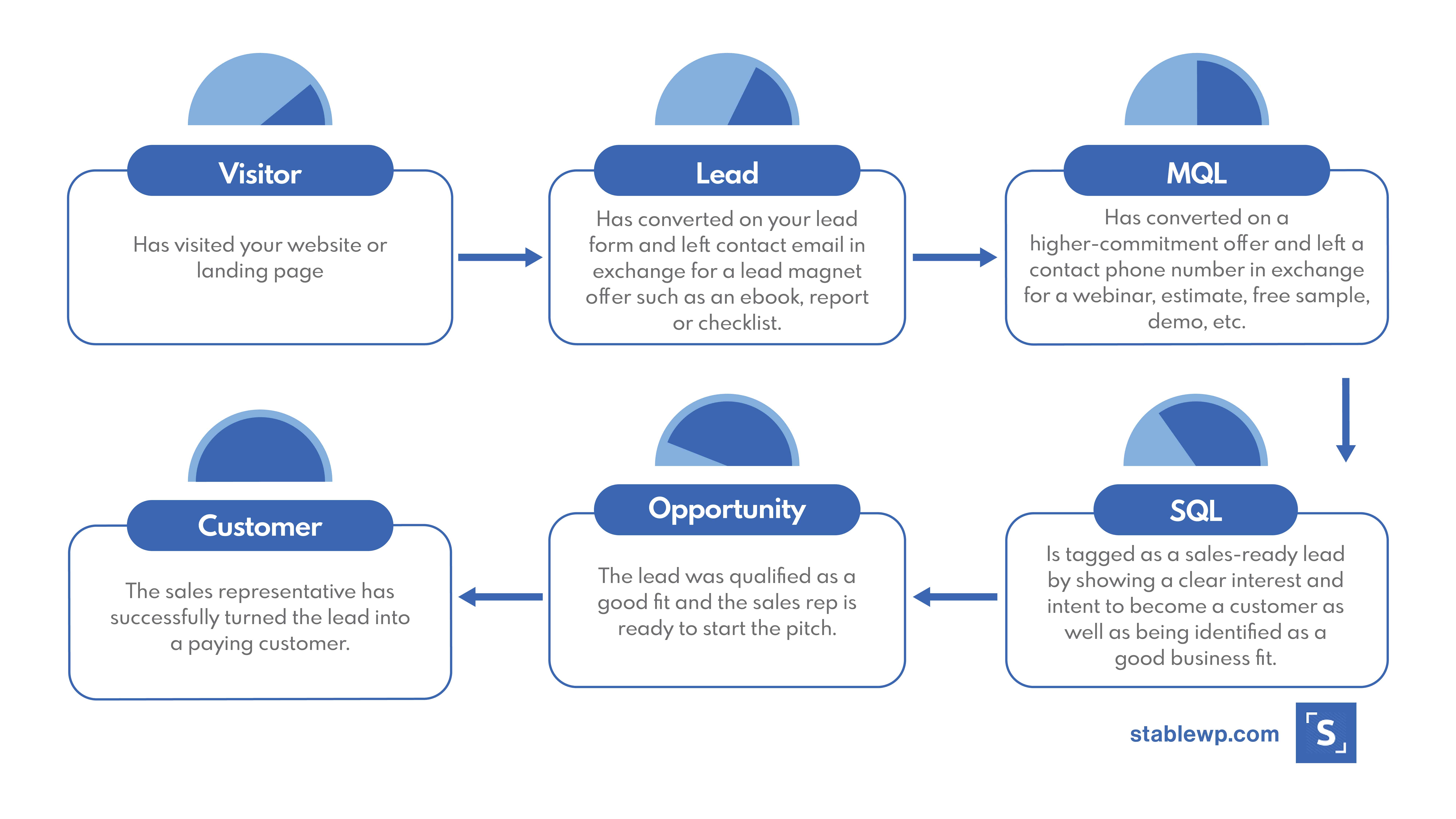
Marketing qualified lead (MQL)
A marketing qualified lead is typically within the consideration phase. They acknowledge that they have a problem, challenge, or issue they need to overcome, but they’re still working to understand and compare the potential solutions.
In a digital marketing sense, an MQL would be a person that has converted on a higher-commitment offer and left a contact phone number in exchange for a webinar, estimate, free sample, demo, etc.
That means a marketing qualified lead is ready for your team to begin sending marketing materials their way to help educate them about your solution.
Only after this information is digested should you aim to offer them the opportunity to try or buy your product/service.
Sales qualified lead (SQL)
A sales qualified lead is generally within the decision or action phase, which means they are extremely high-value to your business because they’re just about ready to make a purchasing decision.
In digital marketing context, an SQL is a person tagged as a sales-ready lead by showing a clear interest and intent to become a customer as well as being identified as a good business fit.
In other words, sales qualified leads come to you ready for the sales team to answer their final questions and get them into a product or plan.
Your ultimate goal is to take every lead you have and nurture them to the point of being an SQL, and then have your sales team convert as many SQLs as possible into paying customers.
Lead generation vs. e-commerce business model
The key difference between lead generation and e-commerce is that the primary marketing goal for lead generation is to capture prospects’ contact info so you can nurture and persuade them to buy your product or service, while for e-commerce the main marketing goal is to get a prospective shopper to purchase on the spot.
Both business models do have a sale as the ultimate goal, however, in lead generation, the customer journey and the sales cycle are typically much longer and require multiple steps and touchpoints.
The lead generation model is most suitable for service-based businesses, complex or innovative products, high-ticket items or B2B businesses, that require educating prospects, developing trust and nurturing a relationship before a potential customer is ready to make a purchase or sign up for your service.
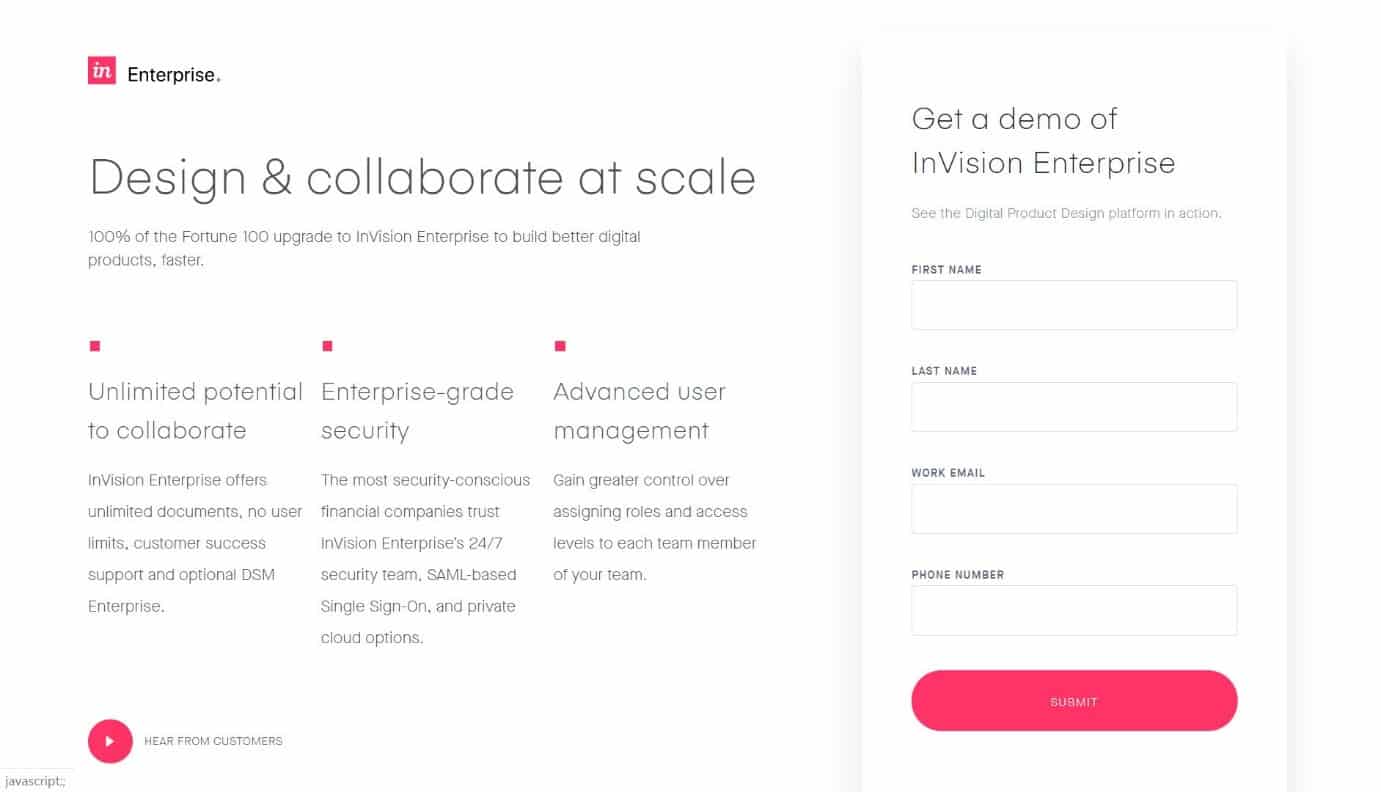
E-commerce is suitable for less complex products that offer clear and easy-to-understand benefits, common and familiar products, or less expensive items. This makes it much easier to sell on a website directly without much need for nurturing. A good deal, plus creating a sense of urgency can speed up the decision-making process and generate sales fast for an online store.
Having said that, e-commerce businesses also benefit from lead generation. If a shopper is not quite ready to buy yet, they can at least leave their contact email, typically in exchange for a coupon or special deal. Then it’s up to email remarketing to close the sale.
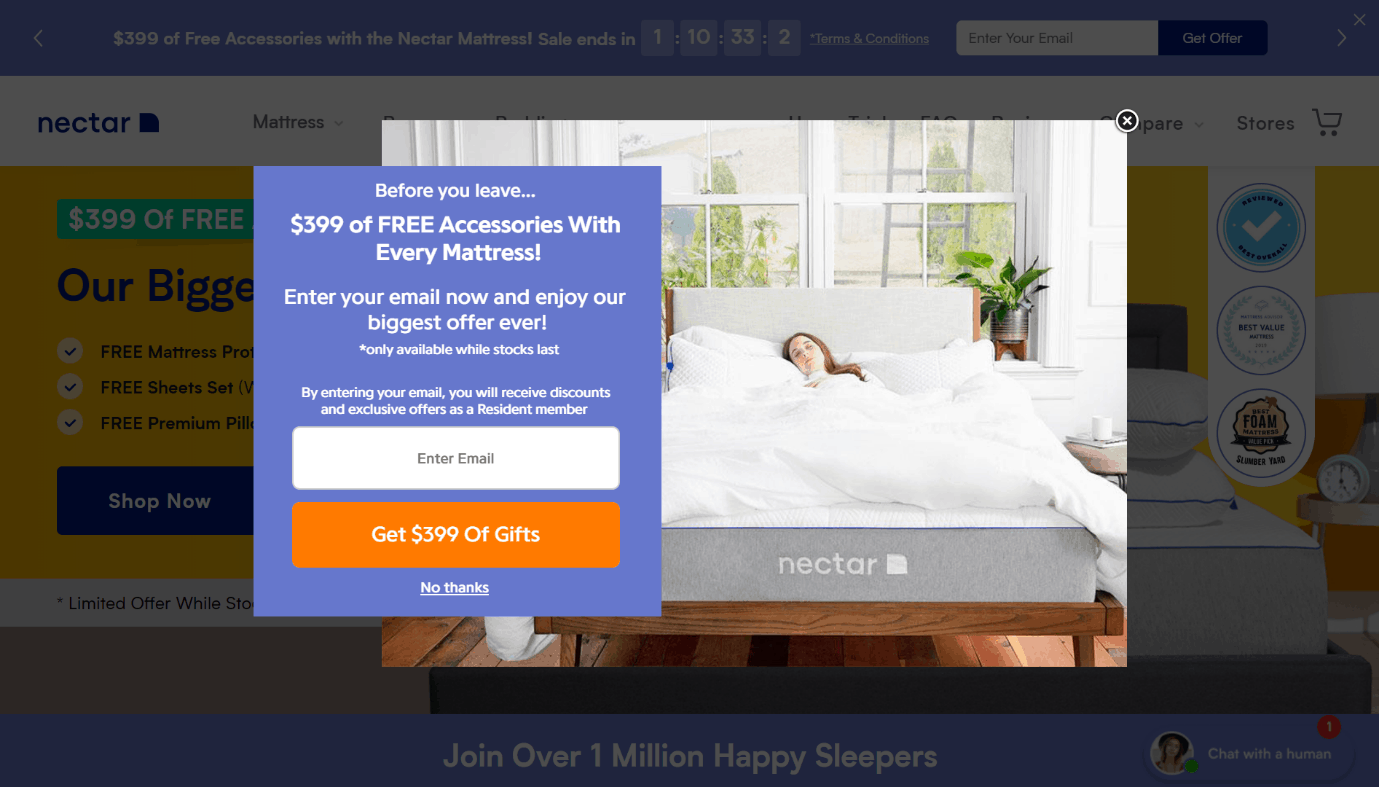
This difference matters because depending on your business model, you’ll need to create the right sales funnel, run targeted digital marketing campaigns as well as design the appropriate website user flow that drives conversions (generates leads or direct sales).
With that out of the way, you’re ready to proceed to the ultimate online lead generation strategy for your business.
The ultimate online lead generation strategy for your business
The ultimate online lead generation strategy includes using multiple touchpoints and the right digital marketing channels to deliver the right message and offers to capture lead information from prospective customers on your website.
And once those leads graduate to MQLs and SQLs, close sales and turn them into paying customers.
Let’s go through the proven online lead generation system guaranteed to help your business consistently fill your sales pipeline with quality leads.
1. Identify your target audience
The foundation of any lead generation strategy is understanding and identifying the type of person who is most likely to buy your product.
Some key things to learn about your target audience are:
- Who they are
- Where they live
- Their age, gender and income
- What are their interests
- Where they like to hang out online
- What’s they’re lifestyle and personality
This information will help you craft digital marketing campaigns and content that appeals and resonates with your target audience.
The efficacy of your entire lead gen strategy relies on the quality and depth of the research you compile about your target audience. It will help you focus efforts on driving visitors that are most likely to become your customers and avoid unnecessary costs.
Some good ways to start is looking at your sales team records, researching online forums for common questions about your product/service, performing keyword research as well as identifying opportunities with competitive research to see what works for others in your industry.
2. Create a funnel
To successfully capture leads online you need to create a funnel. Your lead generation funnel is going to engage prospects at each phase, be it awareness (top of the funnel), consideration (middle of the funnel) or decision (bottom of the funnel).
While a B2C funnel can be quite simple with fewer steps, a B2B funnel will most likely require more steps and touchpoints to engage key decision-makers within a company.
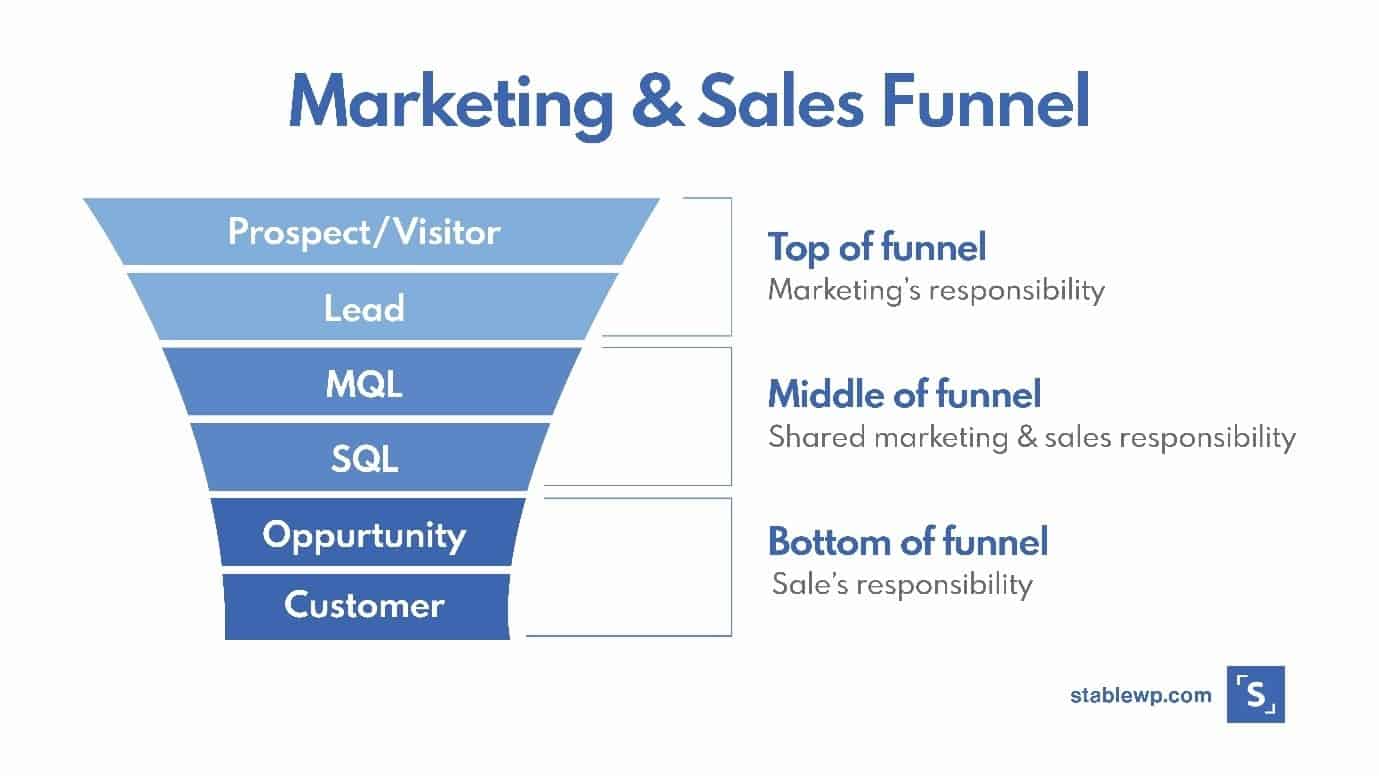
A prospect will need different language, information, and materials throughout each of these phases. They’ll also respond better to different marketing techniques.
For instance, someone just entering the awareness phase is looking for more information about the problem itself so that they can better understand what solutions they can look into down the road. This stage focuses mostly on driving targeted visitors and prospects to your site which you can effectively convert into leads.
They’ll then move into the consideration phase, where they are looking at all their options. In this phase, they’re MQLs in need of material to inform them about your specific product/service.
Beyond that, they’ll enter the decision phase where they are ready to take action (the final phase where you sell them on your solution). In this phase, they are SQLs and they need a product demo, pricing, and information that clarifies why your solution is the best solution.
As you can imagine, catering to leads throughout every phase can be tough, but that’s why you need a funnel to organize your lead generation campaigns.
Your funnel is a collaboration of web design, content, cross-platform marketing and CRM, that helps capture leads in different phases and then funnels them through information, nurturing them to SQLs and, hopefully, customers.
You need to…
- Identify what info your customers need throughout each phase
- Determine how you’ll capture leads in various phases
- Determine how you’ll move leads through your funnel
3X Your Business in 90 Days
Get an unfair advantage with our powerful 3-step funnel strategy and learn how to increase leads and sales by 300% fast.
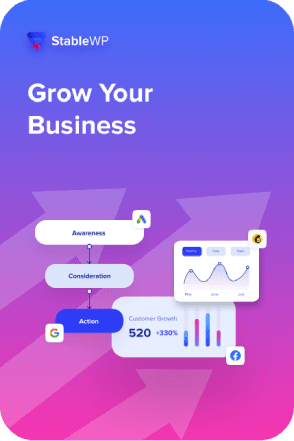
3. Optimize your website for lead generation
To successfully run online lead generation campaigns, you need a website or landing page fully geared and optimized to capture visitors’ contact information.
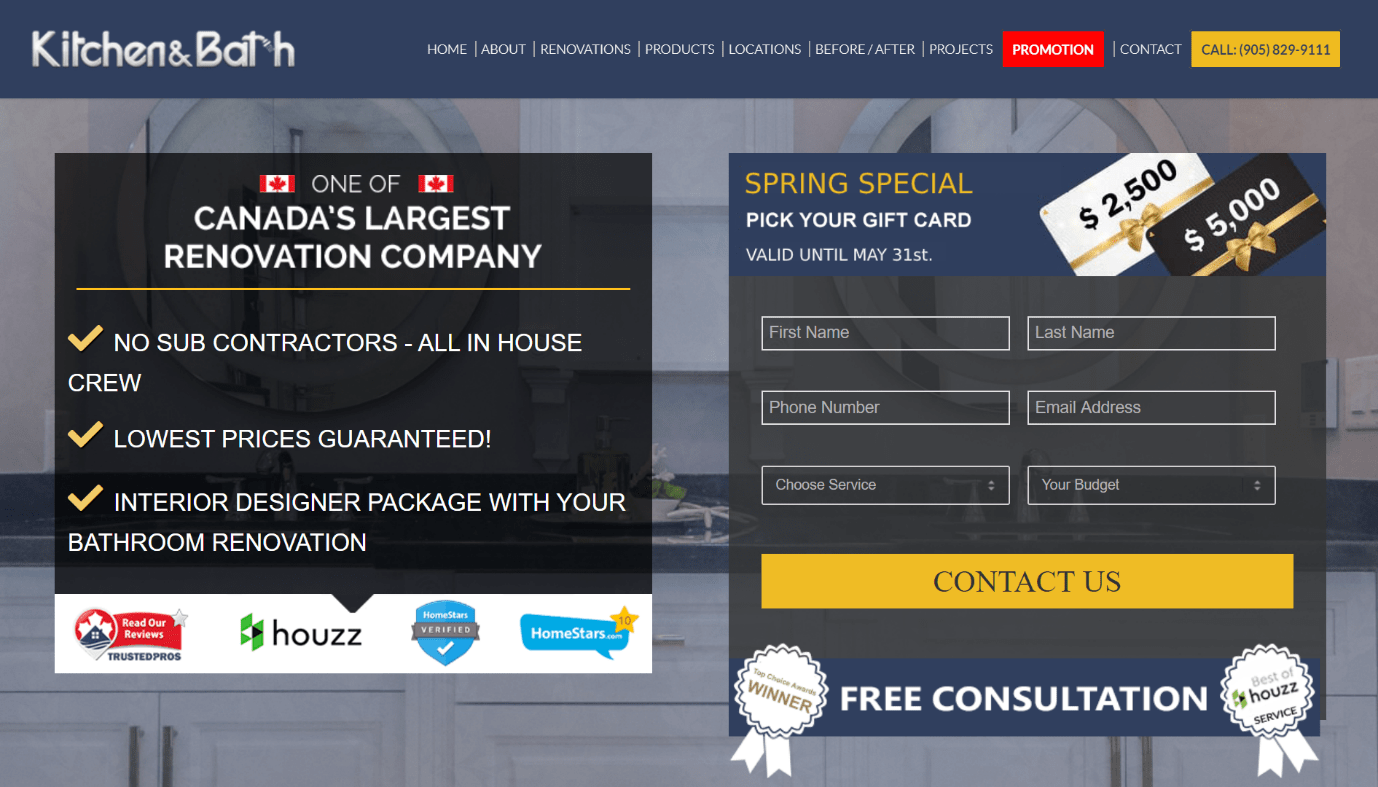
Once you begin to design your funnel to capture and nurture leads, it’s time you sat down and took a good look at your website. Most likely, if a lead generation hasn’t been your central focus up until this point, you’re going to need a full website redesign so that it aligns with your funnel.
To optimize your website for lead generation you need modern design, fast performance, responsiveness across devices, as well as relevant, informative content organized to guide visitors through their customer journey and towards a conversion.
It should also be structured in a way that naturally warms leads and carries them from one phase to the next through informative articles, videos, and other content – ultimately capturing them as a lead by collecting their info.
You need to…
- Examine your website for flaws
- Scrutinize your navigation
- Ensure your content is informative and valuable
- Focus on an actionable flow
- Have clear calls-to-action (CTAs)
4. Make high-value offers
As you begin to look at your website more analytically, it’s also time to think about how you’re incentivizing people to become leads. In other words, you need to consider what value you’re offering a person in exchange for their information.
This is known as a “lead magnet” offer and it’s aimed to provide a good reason and enough value for a visitor to give up their contact information.
Lead magnets come in many forms, but one of the most popular is a free book or guide that helps inform prospects about their problem and promises helpful advice on how they can solve it.
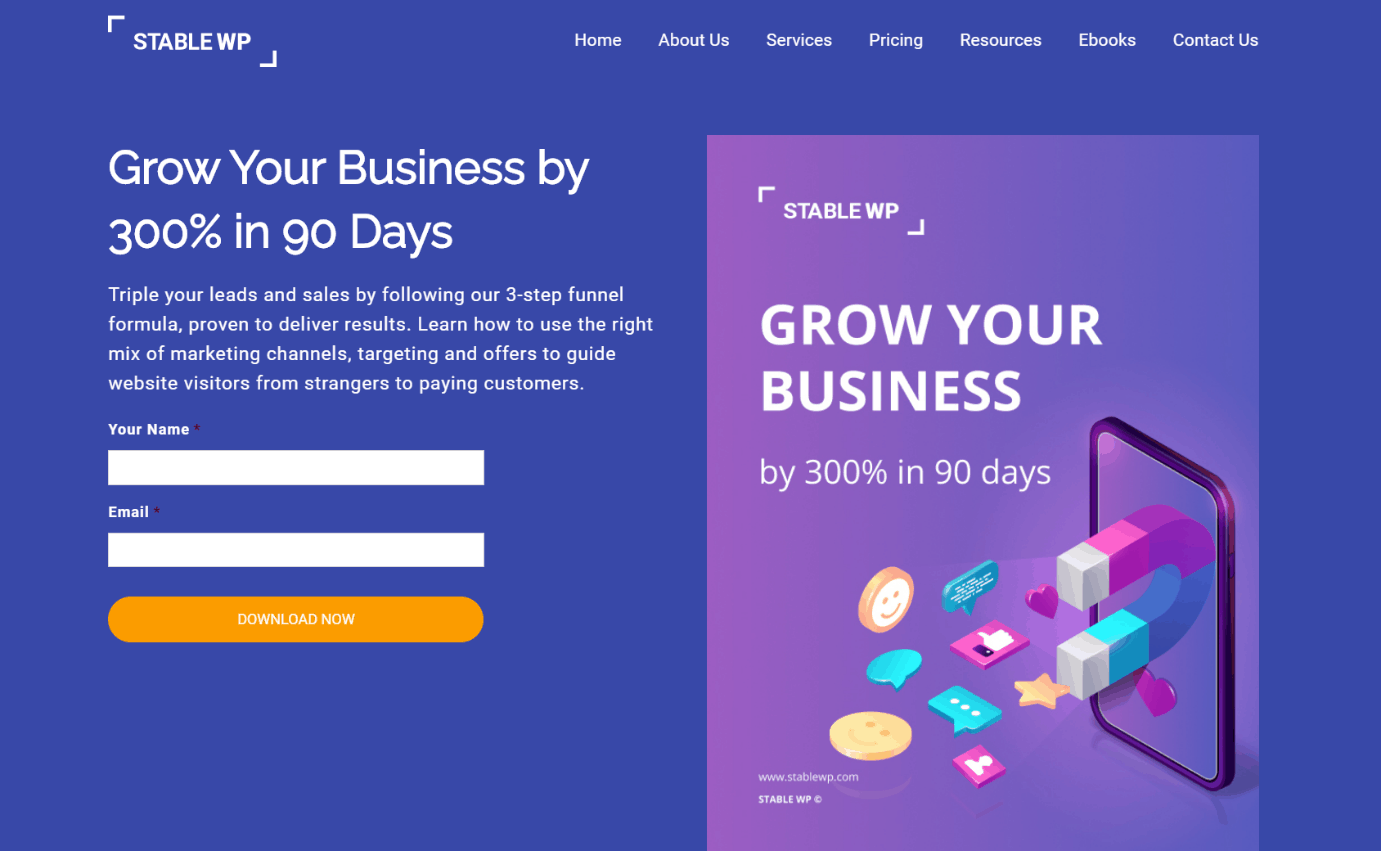
But to move visitors and leads from one stage to the next you can use other offers that resonate at each step. So, you can offer things like:
Awareness – Top of the Funnel
- Ebooks
- Guides
- Checklists
- Videos
- Whitepapers, etc.
Consideration – Middle of the Funnel
- Webinars
- Case studies
- Free samples
- Product spec sheets
- Catalogues, etc.
Decision – Bottom of the Funnel
- Free trials
- Demos
- Consultations
- Estimates or Quotes
- Coupons, etc.
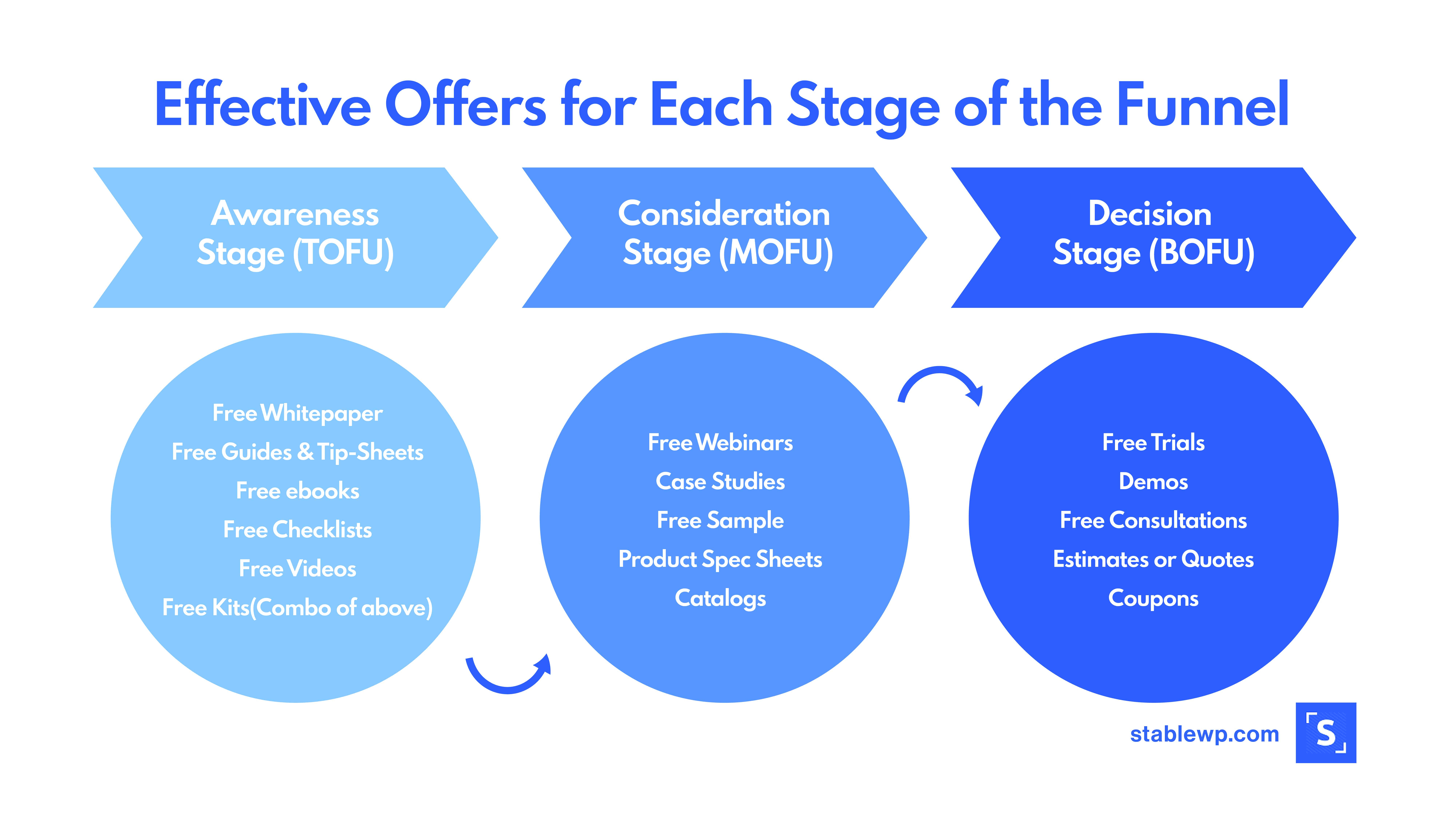
Not only do these magnets help you get more leads, but they also play a part in the nurturing process by educating your leads automatically.
When done right, a lead magnet should help prepare your lead for the next steps, guiding them through the consideration and decision phases and preparing them to take action on your offerings.
You need to…
- Analyze competitors’ offerings
- Come up with a few different offerings that correspond to leads in different phases
- Create high-value lead magnets that people will really want
5. Drive organic traffic to your site
To start generating leads online you must drive traffic to your site or landing page. People need to come and see your content and offer to become leads. One of the best ways to drive visitors at scale is through organic traffic.
Organic traffic is traffic that you don’t have to directly pay for. It’s the traffic that comes from SEO (search engine optimization) efforts which help your website and content rank high on Google and other search engines.
A great example is traffic that comes from articles you have written that rank well in Google and other search engines.
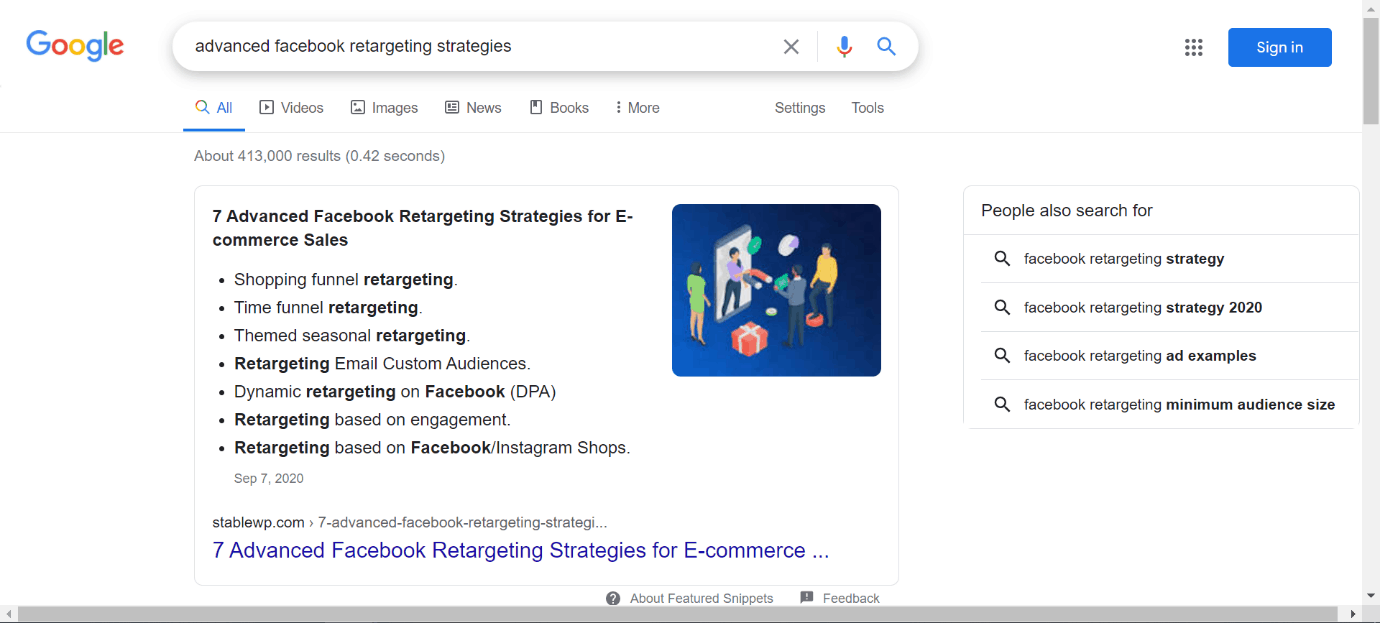
You can start by working to optimize the key pages that you want to rank in Google for relevant search terms. This would primarily be your service pages where you describe your offerings.
For instance, if you’re a dog groomer specializing in show dogs, you might want to rank for the term, “CCBT1 certified groomer” since that’s something your customers will be searching for.
Beyond that, you should also be working on producing a steady stream of quality content for your site’s blog. These articles allow you to rank for a myriad of relevant keywords, helping you capture leads who are in the awareness phase.
This content also helps you build authority as an expert in your niche. For instance, a dog groomer may write an article on, “The Hidden Side Effects of Not Bathing Your Dog.”
SEO content can also come in the form of videos on YouTube.
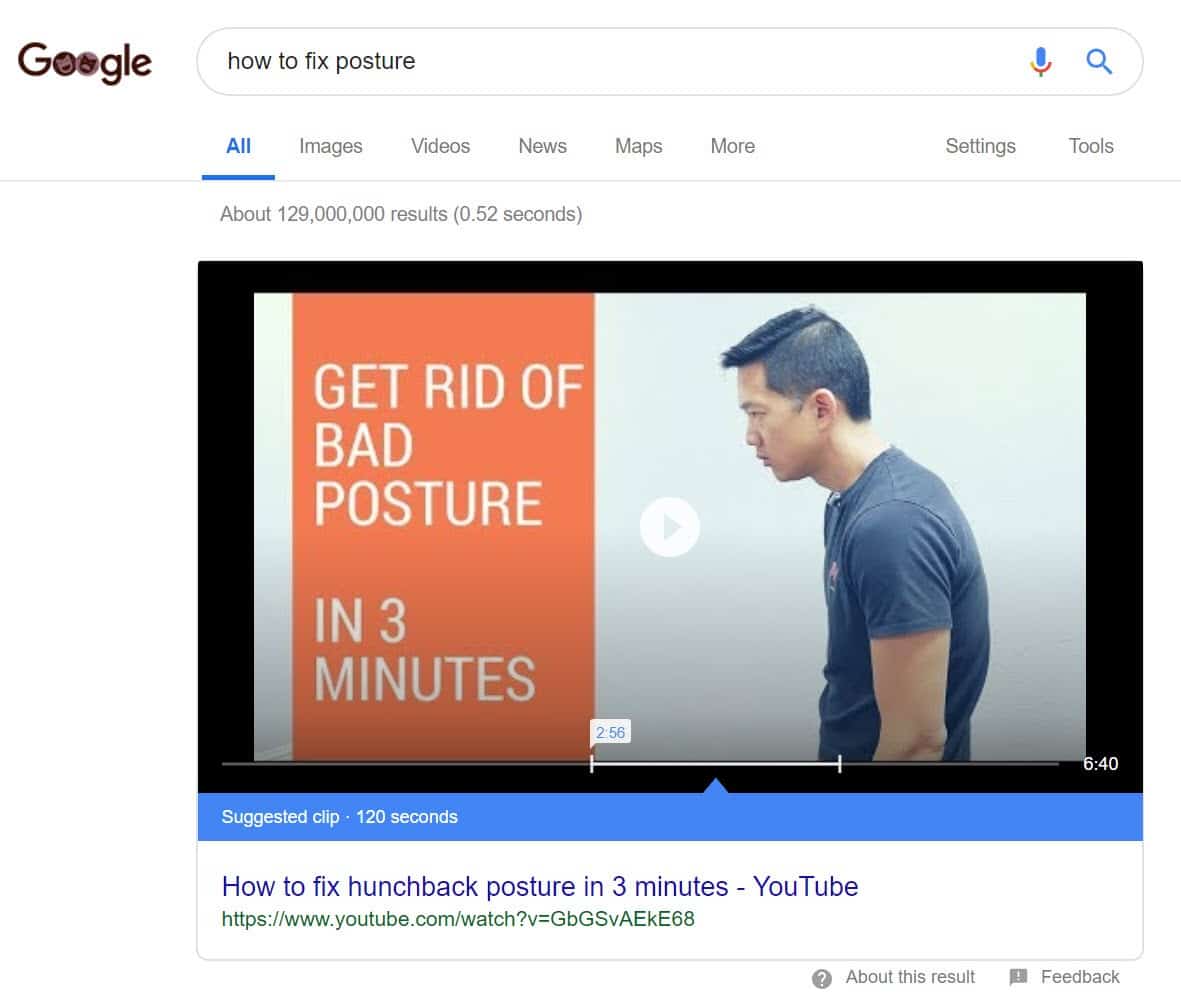
So, remember to optimize your YouTube videos to rank on top of both YT and Google search.
Finally, if you are indeed a local business, you need to remember that local SEO is incredibly important! There’s little use trying to capture leads on a global scale if your primarily sell to your local town, county, or even region.
So, that same dog groomer should be targeting terms like “certified groomer in Toronto” to appear for local searches on Google.
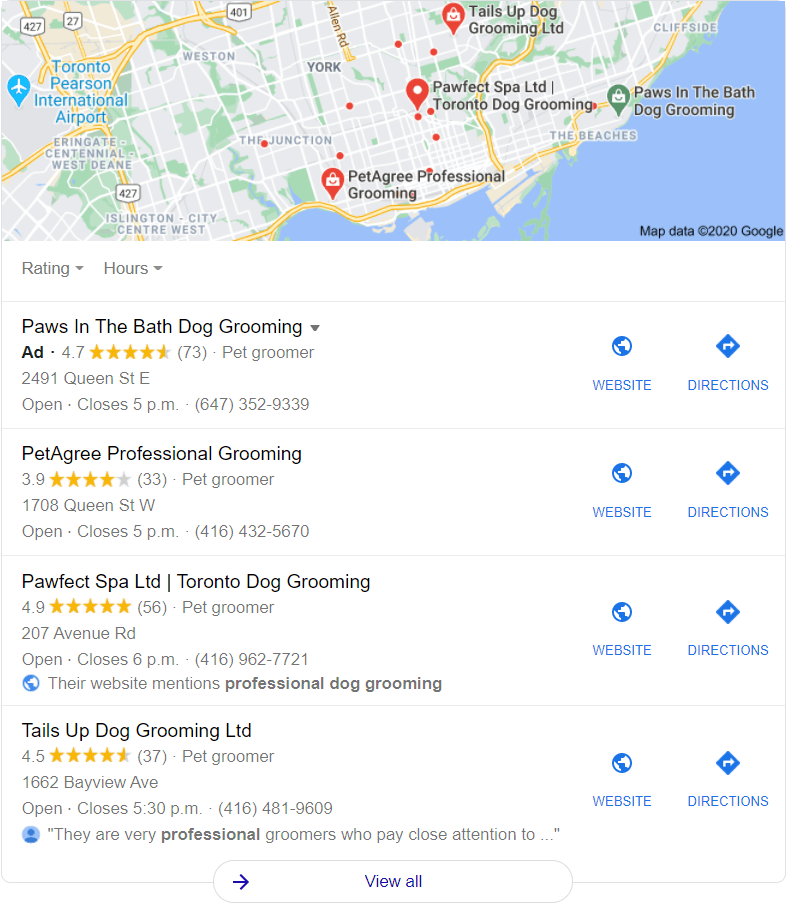
You need to…
- Start with an SEO audit of your current website
- Use an SEO tool to identify the keywords your competitors rank for
- Make a list of keywords you should rank for, at varying levels of traffic and difficulty
- Optimize your pages to rank for your target keywords
- Build backlinks to your pages to rank them as fast as possible
As such, SEO is one of the most effective ways to drive organic traffic to your website, but it does take time. You’re not going to rank for any high-value keywords overnight, making SEO a long-term strategy that you should always be investing in.
6. Use PPC for highly targeted traffic
PPC or pay-per-click advertising is one of the most effective methods for driving highly targeted traffic to your website. Using Google or Facebook Ads you can reach your ideal customers at the right moment and drive them to your site.
Unlike SEO, which delivers great results in the long run, with PPC you can generate results almost instantly. You just must configure your campaign targeting, set up ads and launch the campaign.
Google Ads is a good place to start and it’s a great all-around choice for almost any business. It’s often used to drive traffic that has the highest purchase intent. You can capture searchers who are most ready to buy by targeting keywords relevant to your service/product.
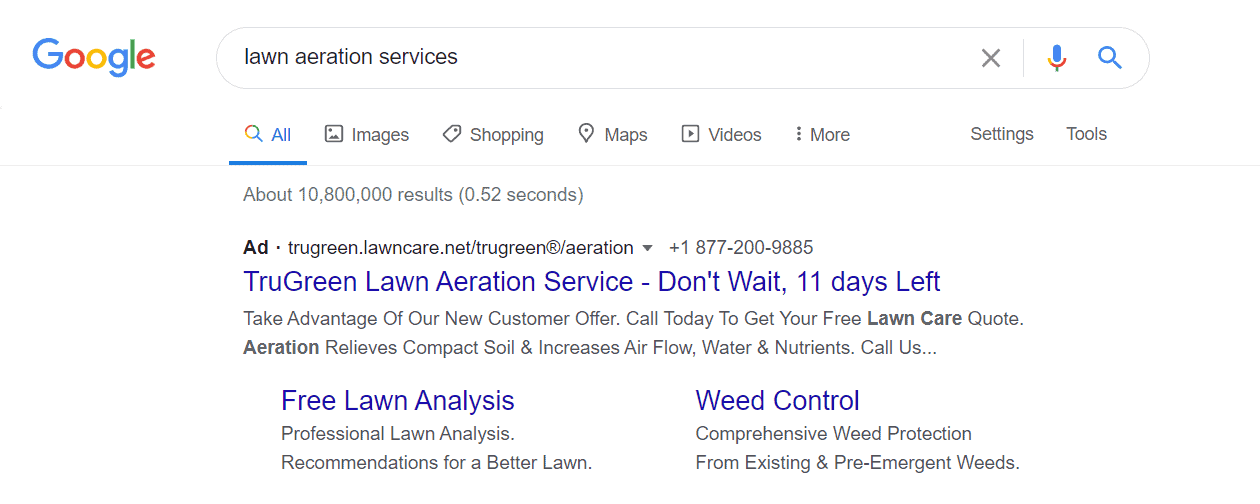
Facebook Ads is the other high effective PPC channel that allows you to target users based on their characteristics such as:
- Demographics
- Interests
- Behaviour, etc.
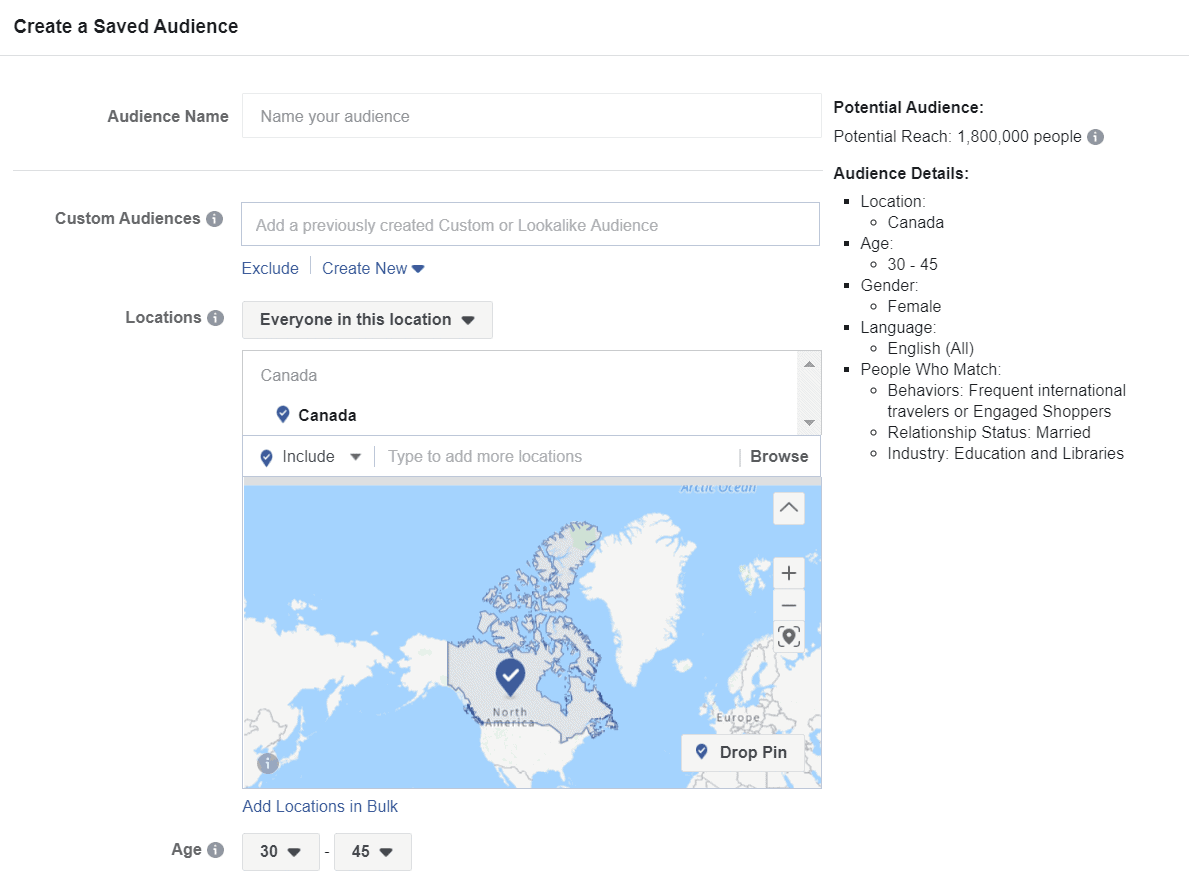
Facebook Ads also appear on Instagram, so you can expand your reach to even more people and get them to convert on your lead magnet offers.
For B2B companies, lead generation using LinkedIn Ads is probably the most effective investment as these ads will put you right in front of your business prospects.
LinkedIn’s ad system is highly advanced, too, allowing you to target people based on:
- Position in a company
- Company
- Company size
- Job seniority
Of course, you’ll also want to branch out to other advertising channels to get a steady stream of leads throughout the various phases.
These platforms also offer extremely powerful retargeting features, allowing you to repeatedly put your business in front of potential leads until they finally begin entering the consideration or decision phase and they reach out to you.
3X Your Business in 90 Days
Get an unfair advantage with our powerful 3-step funnel strategy and learn how to increase leads and sales by 300% fast.

7. Use social media to connect with prospects
Social media can also be highly beneficial for generating leads online for your business. You can use it to raise awareness of your company and its product/services as well as connect with potential leads and customers.
Whether you’re investing in SEO, PPC or both (like you should be doing), you should also be putting in some effort each day to drive further engagement just by interacting with potential prospects on social media.
You can also engage users on Facebook, Instagram, Twitter, and other social networks to help you build a following as you build awareness.
A good example of a worthwhile activity on social media is engagement with other people’s posts or comments. So, whenever someone interacts with your content be sure to respond and try to spark a conversation.
This type of social media engagement is great for upper-funnel stages, where the main goal is to get people familiar and interested in your business and products/services.
These social platforms also allow you to reach out to prospects.
Manual outreach on LinkedIn, for instance, is a great example of this. If you use LinkedIn Sales Navigator, you’ll even get to experience features that will help you find highly targeted B2B leads.
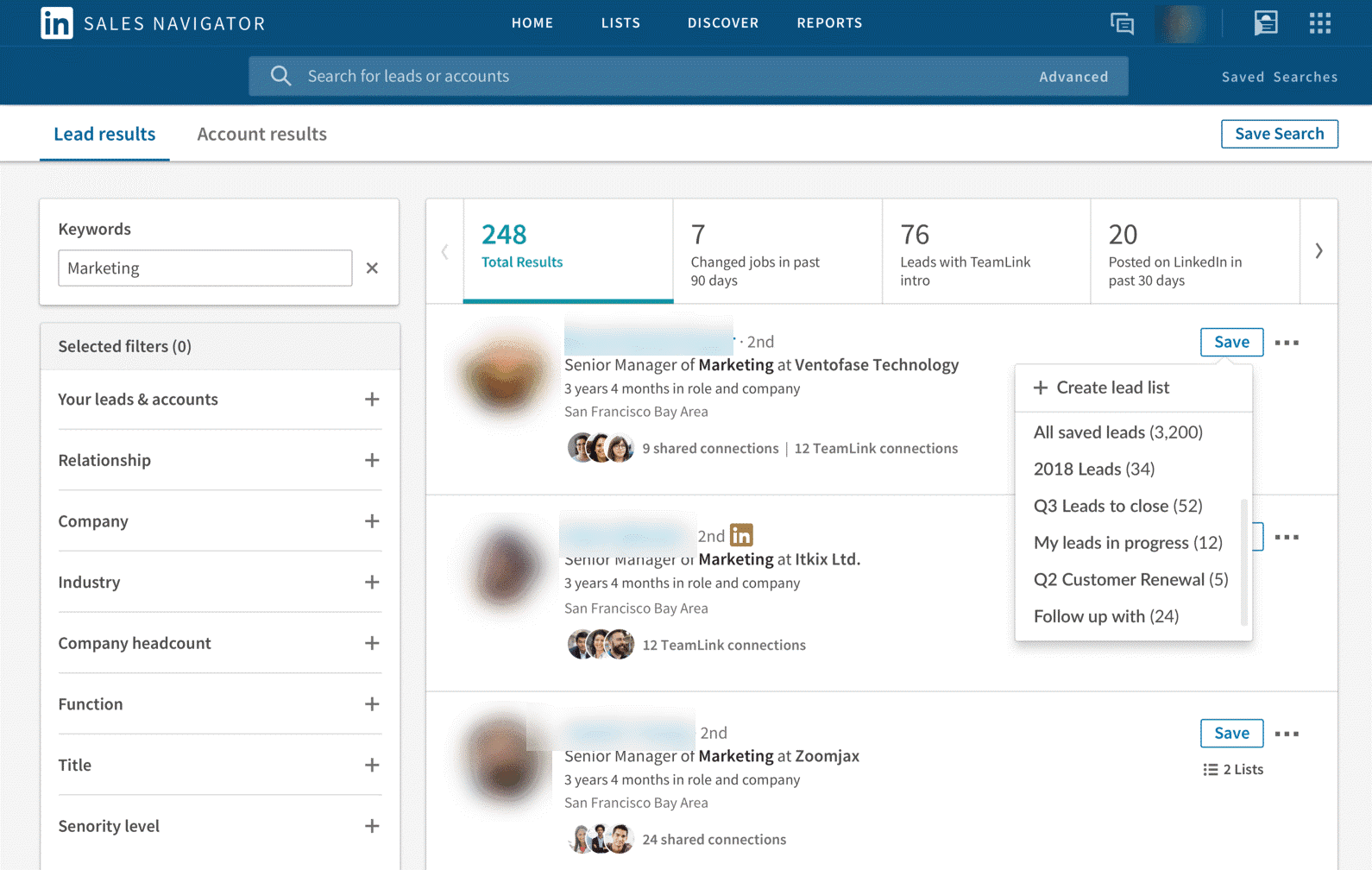
Lead generation with LinkedIn outreach is an excellent way to leverage your social media presence to discover and capture new leads at scale.
8. A/B test your landing pages
To get the highest possible performance out of your online lead generation campaigns you must optimize your landing pages to capture as many leads as possible.
You can start optimizing landing pages for maximum conversions with some of the following best practices:
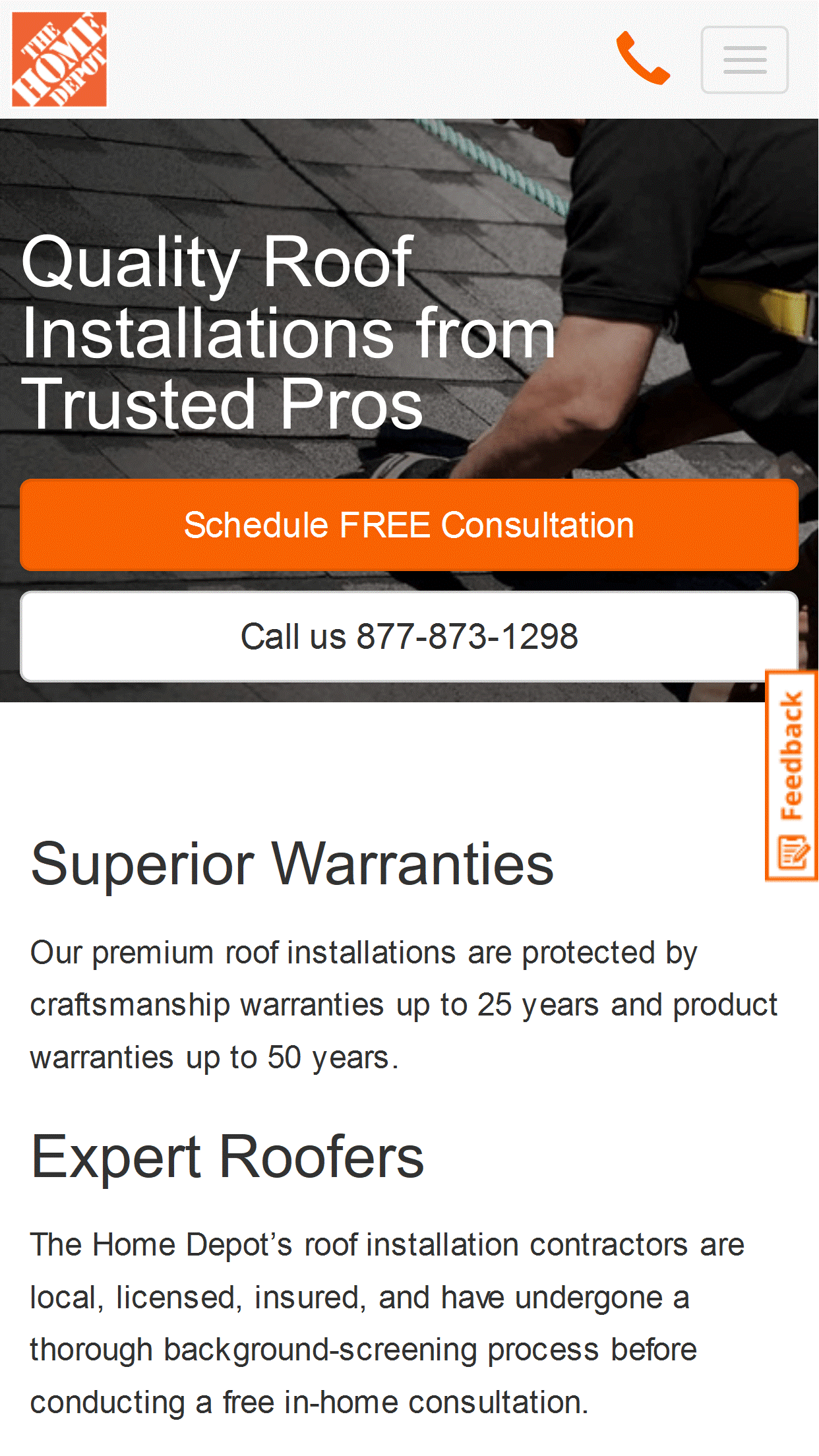
As you go on driving traffic to your website, be sure that you’re looking at all of the data available to you as those numbers are ultimately going to help you optimize your landing pages from here on out.
Use Google Analytics and user behavior software like HotJar to analyze weak spots on your landing with high drop-offs. These are likely areas that are preventing users from completing your forms and submitting their lead information.
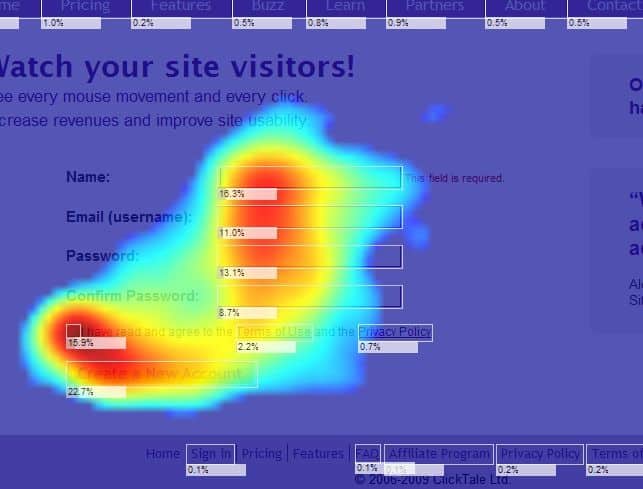
Of course, you should also be regularly testing your landing pages and their elements to figure out what changes drive the highest impact and increase in performance before pushing updates live.
You need to…
- Collect lots of data regarding how your landing pages perform
- Continuously optimize your landing pages as you learn about how your prospects interact with them
- Split test different elements, one variable at a time, to see how you can improve
9. Take advantage of automation
As we wrap up this guide, let’s touch on automation as something you should most definitely include in your lead generation strategy. After all, one of the biggest advantages of digital marketing is the fact that you can automate most of the processes to reach potential leads at scale at a much lower cost.
Without it, lead generation is most certainly going to take up way too much time and energy and you have limited resources to work with.
One extremely powerful way to implement automation is to start by automating the lead nurturing process through an email marketing sequence.
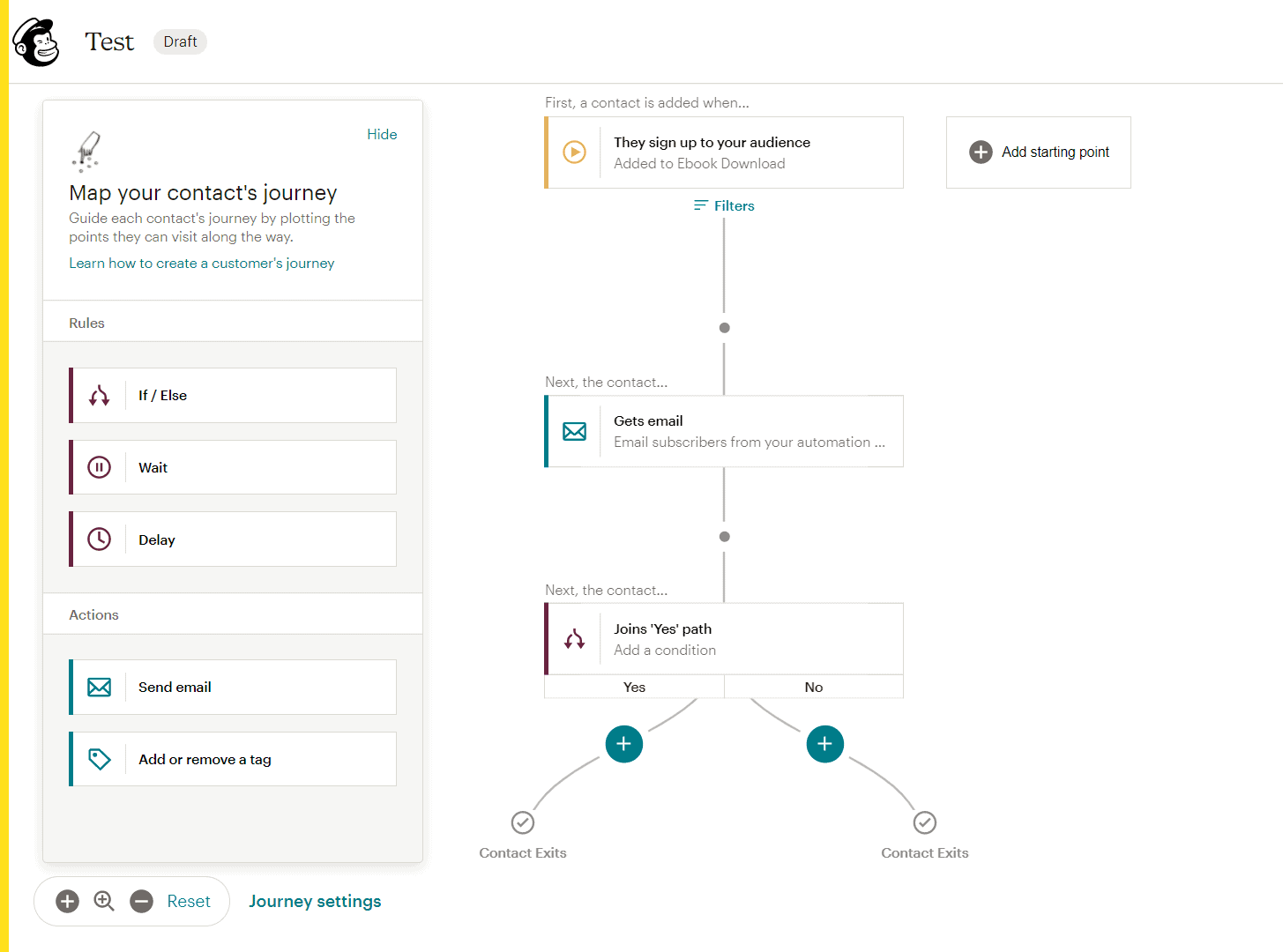
You can create an email sequence aimed to nurture new leads and deliver the right message at the right moment as well as re-engage lost leads that haven’t been active for a while.
With the right sequence, you’ll be able to take leads from MQLs to SQLs in a completely hands-off fashion just by timing and sending the right emails to them over the period of a few days, weeks, or months (depending on your average sales cycle).
You need to…
- Consider where automation can fit into your strategy
- Design and test a nurturing sequence
- Review data and revise your sequence to improve results over time
There are many email marketing services that can help you automate the entire lead nurturing process, so be sure to check your options and find the tool that fits your needs.
Why you shouldn’t buy leads
Buying leads is one thing you should avoid at all costs. Not only are many lead lists unethically collected through parties who take information without explicit consent from the leads, but they’re also generally extremely low quality.
Any lead list you purchase is going to either be freshly scraped and completely unqualified, filled with dated contact information, or already spammed by others who have bought that list who are hoping to make a quick sale (and bombarding the lead in the process).
Certainly, after reading through this step-by-step guide and thinking about all the things you need to do, you might just come to the simple conclusion that it’d be far easier to just buy leads.
Unfortunately, buying leads just doesn’t equate to great results.
Ultimately, the only way to collect fresh, clean, quality leads for your business is to come up with a strategy and follow the steps we just walked you through. It may not be as easy as buying leads, but it will be worth it!
Conclusion
Online lead generation holds extreme potential to consistently fill your sales pipeline with fresh prospective contacts at scale. And with the right digital marketing strategy and a system in place, you can drive maximum performance and high quality leads that you can convert into paying customers.
Lead generation is an ongoing process that delivers long-term results for your business. And once you’ve set things up you can generate leads almost on autopilot.
So, where do you stand with your lead generation strategy?
If you’re starting from scratch, it can certainly feel overwhelming. But all the work you put in will most certainly pay off.
However, if you need help from an expert team experienced in generating leads online for numerous clients, feel free to reach out.
And, as always, drop us a line down below if you have any questions or comments. We’ll try to reply and help you out ????

